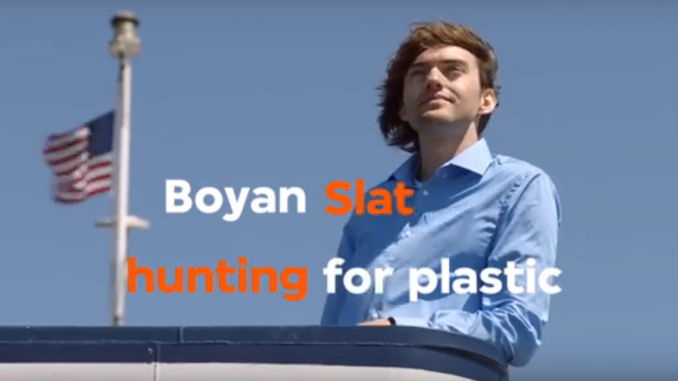
“When people say something is impossible, the sheer absoluteness of that statement should be a motivation to investigate further.”
~ Boyan Slat
In 2013, Dutch inventor and entrepreneur Boyan Slat (at the time, just 19 years old) dropped out of an aerospace engineering program at Delft University of Technology to found The Ocean Cleanup, a non-profit dedicated to cleaning up ocean plastic pollution. In the dozen intervening years, the Rotterdam-based CEO has led Ocean Cleanup through initial scientific work, to successful Proof of Technology in 2021, to astounding levels of plastic extraction since then. By 2024, Ocean Cleanup’s 120-plus employees from 30-plus countries had achieved the remarkable milestone of 11.7 million kilograms of ocean trash removed—the equivalent of 1,340 kilos for every hour of the year and 78% more than in 2023.
Slat’s passionate decision to figure out how to clean up ocean plastic arose when, as a 16-year-old, he encountered “more plastic bags than fish” while scuba-diving in Greece. Long-time Solari subscribers familiar with the story of late Australian entrepreneur Jason Bawden may recall that he, too, became determined to tackle pollution (on both land and sea) after experiencing unpleasant after-effects from surfing in Sydney’s polluted waters.
As The Ocean Cleanup’s informative website explains, there are five major “ocean garbage patches” spanning millions of square kilometers, with the largest one being the Great Pacific Garbage Patch (GPGP) between Hawaii and California. Solving the problem entails not just cleaning up what is already there but also intercepting plastic in polluted rivers—the “arteries that carry waste from land to the ocean.” An additional challenge is that as plastic breaks down into smaller and smaller pieces, it becomes harder to clean up and more likely to be mistaken as food by sea life.
The Ocean Cleanup’s innovative technologies “concentrate” ocean plastic—ranging from small pieces millimeters in size to large debris—so as to be able to capture and extract it, also making use of computational modeling to identify areas of higher plastic concentration called “hotspots.” The company’s “Interceptor” technologies focus on river cleanup, with customized solutions to handle variables like river width, depth, flow speed, debris composition, seasonality, and tides.
The Ocean Cleanup estimates that the GPGP could be cleaned up within 10 years for $7.5 billion—an amount, the non-profit points out, that is “less than the U.S. spends on Halloween decorations each year.” Its laudably ambitious goal is to remove 90% of floating ocean plastic by 2040 and thereby “put itself out of business.”
In a 2023 interview, Slat humbly commented on his can-do leadership style:
“We’ve made many mistakes and…there are many things we could have done way better, but…we never gave up, and…we have this sort of super-human level of perseverance. We are focused on the goal, and we don’t deviate from that…. You should never give up too early because the impact that you’re going to have in Year 10 of your project is going to be way greater than Year One through Nine combined.”
Related:
Cleaning Up the Garbage Patches
The Ocean Cleanup Breaks 10,000,000 Kg Barrier
Boyan Slat Reflects on What It Takes to Rid the Oceans of Plastic
Boyan Slat: The Man Who Went Out to Clean the Oceans
Related at the Solari Report:
Hero of the Week: June 20, 2022: Jason Bawden
Leadership: Seeking Excellence in an Omniwar World with Steve Smith
Metanoia Series: Leadership with Junious Ricardo Stanton
views: 1
